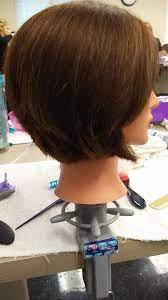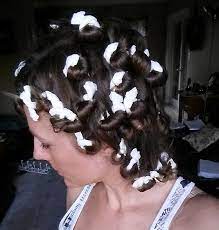
An annual haircut is essential in maintaining healthy hair. A haircut reshapes new growth, trims split ends and eliminates damaged ones as part of its services.
Barbers use different angles when cutting hair. Selecting the ideal angle can make or break your haircut. There are five basic angles; each creates its distinct effect.
Layered
Layering is a fantastic way to add volume, movement, and definition to your hairstyle while framing your face and softening extensive features. This technique works for most hair types; however, short hair types, like those who sport the classic pixie cut, may find this style especially compelling.
Begin by selecting a vertical section of hair at the crown, secure it with an elastic hair tie, and press it against your head shape – this will serve as your guide throughout your work.
Before point-cutting each section, determine how high you’d like the area elevated before point-cutting it. This will give you a good indication of where the shortest layers will fall on your head. Working your way around your head with thinner sections held at different angles for double-checking length helps eliminate any unevenness in the final cut.
Choppy
A choppy 45-degree haircut is ideal for anyone looking to change their look with new locks. It creates an eye-catching statement while softening sharp and prominent facial features. Plus, this style can be worn both with and without bangs!
A choppy cut involves combing out and pulling each strand at an angled pull; cutting at that same angle creates an arch effect reminiscent of laddering upstairs. This technique consists of making an abrupt transition between different strand lengths. It requires more time to execute but can add weight and structure to a bob haircut or layered pixie while adding movement and volume in curly styles.
Razored
Razor cutting is an efficient technique for adding movement and weight reduction in short hairstyles such as bobs and pixie cuts. It produces jagged ends instead of straight scissor cuts with more blunt ends.
This cut requires an extremely precise and accurate stylist who uses shears and a razor to avoid over-cutting or demolishing their client’s hair. Furthermore, it’s essential to apply this technique with a light hand.
Begin by raising the fringe and forward top section to a 45-degree angle, followed by elevating the mohawk section (horseshoe section) by overdirecting it towards the back center using the bottom of your back hairline as a guide. Continue this pattern until reaching back and nape sections before making adjustments as necessary until you achieve the desired look. When done, cross-check that everything is even and balanced before finishing off the haircut with cross-checking to make sure everything looks flat.
Thinning
Thinning is a haircutting technique that reduces volume and creates a tapered look in bobs, longer cuts, or curly hairstyles. Thinning scissors are used to thin out chunky areas on the head, which would otherwise become too thick. Students enrolling in Pivot Point Academy’s Cosmetology program will learn the proper usage of this tool for an attractive finish.
Hold a small section of hair between your index finger and middle finger to create a thin cut. Next, position the thinning shears over this section before moving them down along the strand – repeat this step until all areas have been trimmed at an angle 45 degrees from your head.
For an eye-catching finish, point cutting can create an eye-catching effect. This advanced technique requires more precision as it uses an alternative cutting angle of 45 degrees to cut the hair shorter. Best used on shorter locks.

